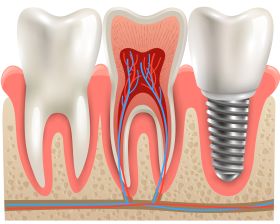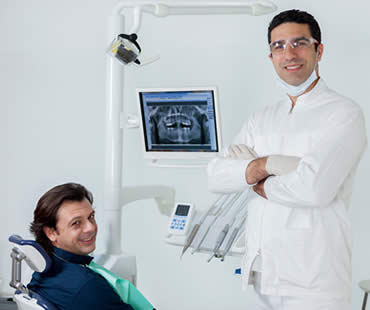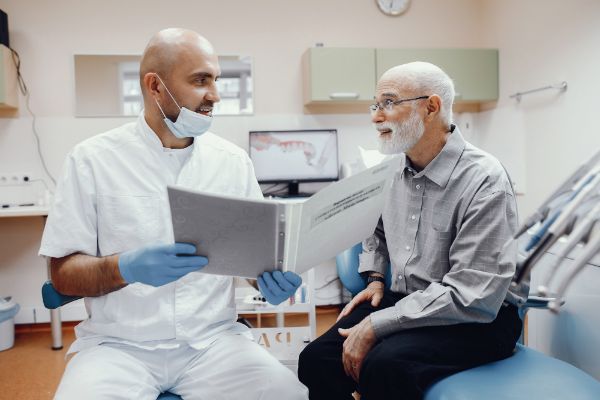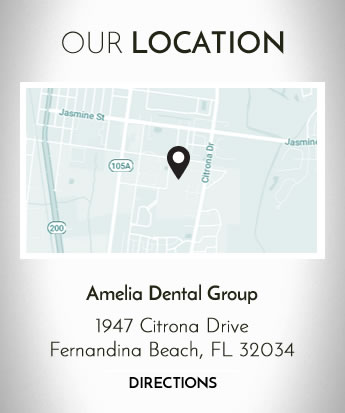
Fear can stop come people from doing certain activities, and sometimes it may impact a person’s health and overall wellbeing. One example is visiting the dentist. You might be surprised at the number of people who completely avoid dental care because they are afraid. As a result, sedation dentistry has become a popular way to allow nervous patients to get the necessary treatment without all of the negative vibes.
Sedation dentistry involves administering drugs to help patients relax. There are various levels of sedation available, depending on the patient’s needs, procedures, age, and medical history. Your dentist can help decide which sedation amount and method is most appropriate for you. It ranges from light sedation to simply take the edge off, moderate sedation that renders you unaware but still awake, or deep sedation that practically puts you to sleep throughout treatment.
There are also a variety of methods for sedation dentistry. Oral medications are swallowed, nitrous oxide gas is administered through a mask over your nose, or medications can be given through an intravenous needle directly into your veins. The method is recommended based on each patient’s needs and situation.
Dental sedation manages pain so that you won’t feel anything during treatment. Most patients do not remember much about what occurred while under sedation. That is especially beneficial for patients with dental fears, because they are more willing to return for future appointments since they don’t have any bad memories from the last one.
Sedation is safe and effective when performed by a trained dentist. Make sure that any dentist who administers your dental sedation is qualified and experienced with the techniques. There is no reason to avoid dental checkups and treatment due to fear or anxiety. It is much better to get care to correct problems before they worsen, or head them off before they start. Sedation dentistry enables patients to comfortably and safely obtain treatment and eliminate dental fears.
We treat patients from Fernandina Beach and the surrounding area

The Benefits of Dental Implants: Restoring Oral Health and Confidence
The Importance of Dental Health
Maintaining good oral hygiene is essential to overall health. Poor dental health can lead to a variety of health problems, including gum disease, tooth decay, and even heart disease. It’s important to take care of your teeth by brushing and flossing regularly, visiting your dentist for routine checkups and cleanings, and addressing any dental issues promptly.
The Benefits of Dental Implants
Dental implants provide numerous benefits beyond just restoring missing teeth. One major benefit is improved confidence in your smile and appearance.
Because they look and feel like natural teeth, dental implants can restore confidence in those who may have felt self-conscious about their smile or speech due to missing teeth. In addition to enhanced appearance, dental implants also provide greater functionality compared to other tooth replacement options such as dentures or bridges.
They allow for better chewing ability without discomfort or slipping associated with other methods. Another significant benefit is long-term durability; when cared for properly, dental implants can last a lifetime unlike other options that may need frequent replacement.
Furthermore, dental implants promote better oral health by preventing bone loss and gum recession that can occur with missing teeth. They also make it easier to maintain proper oral hygiene by not requiring special cleaning methods or adhesives.
Overall, dental implants provide a permanent, cost-effective solution for enhancing oral health and confidence. In the following sections, we will explore each of these benefits in more detail.
Improved Appearance
Dental implants are a highly effective solution for restoring missing, damaged or decayed teeth. They are designed to look and feel like natural teeth, providing a very natural-looking appearance that is sure to restore confidence in your smile and overall appearance. In fact, dental implants are virtually indistinguishable from your natural teeth, making them a perfect solution for anyone who wants to improve the appearance of their smile.
Dental implants look and feel like natural teeth
The materials used in dental implants are carefully chosen to ensure they look and feel just like natural teeth. The implant itself is made of titanium, which is biocompatible and can integrate with the jawbone over time for added stability. The crown (the visible part of the implant) is typically made of porcelain or ceramic material that closely resembles the color, texture and translucency of your natural teeth.
Because dental implants are custom-designed to match your existing teeth, they will blend seamlessly with the rest of your smile. This creates a more cohesive look that will make you feel confident when you smile or talk to others.
Restores confidence in smile and appearance
The impact of a missing tooth or multiple missing teeth can go beyond just affecting oral health. It can also have an effect on emotional well-being. People who have lost one or more teeth may struggle with feeling self-conscious about their appearance when talking, smiling or eating in public.
Dental implants provide an excellent way to restore confidence by providing a natural-looking solution that seamlessly blends with surrounding teeth and restores full functionality while improving aesthetics. If you’re looking for ways to improve your overall oral health while regaining confidence in your smile’s appearance, consider consulting with an experienced dentist about whether dental implants may be right for you.
Enhanced Functionality
Improved Chewing and Speaking Ability
Dental implants are designed to function like natural teeth, allowing patients to chew and speak with ease. With dentures, there can be discomfort or soreness associated with eating certain foods, which can lead to a limited diet. Dental implants help alleviate this issue by providing a strong foundation for chewing and biting into food without any discomfort.
Additionally, dentures can slip around in the mouth while speaking or eating, leading to issues with communication and confidence. With dental implants, there is no slipping or movement of the tooth replacement, allowing patients to feel more comfortable and secure while speaking or eating.
No More Discomfort or Slipping Associated with Dentures
One of the main issues with traditional dentures is that they can cause discomfort due to pressure on the gums and bone tissue underneath. This pressure can also lead to bone loss over time. Dental implants provide an alternative solution that eliminates these issues.
The implant is surgically placed into the jawbone where it fuses with the bone tissue over time, creating a strong foundation for a tooth replacement that doesn’t put pressure on gums or cause pain. Additionally, because dental implants are anchored securely in place within the jawbone, there is no slipping or movement associated with wearing them compared to traditional dentures.
Overall, dental implants provide a permanent solution for those looking for enhanced functionality when it comes to chewing and speaking ability without any discomfort. The elimination of slipping and movement also leads to improved confidence levels while wearing them compared to traditional dentures.
Long-Term Durability
Dental implants are a permanent solution for missing teeth, as they integrate with the jawbone and create a stable foundation for the artificial tooth. Unlike other tooth replacement options like dentures or bridges, dental implants do not require any special care or maintenance once they have been properly placed. With proper care and regular dental check-ups, dental implants can last a lifetime.
Dental Implants are a Permanent Solution
Dental implants are made from high-quality materials that promote osseointegration, which is the process of bone fusing with the implant. This creates a stable foundation for the artificial tooth and helps prevent bone loss in the jawbone. As long as the implant is not damaged or impacted by gum disease or trauma, it will remain in place and function like a natural tooth.
Proper Care Can Last A Lifetime
Although dental implants do not require any special care or maintenance, it is important to practice good oral hygiene habits to ensure their longevity. Brushing twice daily, flossing regularly, and visiting your dentist for routine check-ups will help to keep your gums healthy and prevent any damage to your implant. It is also important to avoid chewing on hard objects like ice or using your teeth as tools to prevent any damage to your implant.
In addition to promoting good oral hygiene habits, proper care also includes avoiding habits that can contribute to gum disease such as smoking or using tobacco products. Patients who smoke have an increased risk of implant failure due to reduced blood flow and poor healing abilities.
Overall, dental implants are a highly durable tooth replacement option that can last a lifetime with proper care and regular check-ups with your dentist. By taking these simple steps you can ensure that you get the most out of your investment in better oral health!
Improved Oral Health
Dental implants are not only a cosmetic solution but also a functional one. They can improve your oral health in many ways. Unlike dentures, which can cause bone loss and gum recession, dental implants prevent these issues from occurring.
Dental Implants Prevent Bone Loss and Gum Recession
When you lose a tooth, the bone that once supported it begins to deteriorate due to lack of use. Over time this can lead to teeth becoming loose or even falling out. Dental implants act as artificial tooth roots, stimulating the jawbone and preventing any further bone loss or gum recession from occurring.
Easier to Maintain Oral Hygiene
Oral hygiene is essential for maintaining healthy teeth and gums. With dental implants, it’s easier to maintain good oral hygiene than with other tooth replacement options such as dentures or bridges.
You can brush and floss your dental implants just like you would with natural teeth; there is no need for any special cleaning techniques or products. Furthermore, because dental implants are permanent fixtures in your mouth, there’s no need to remove them for cleaning overnight like with dentures which need thorough cleaning before being replaced inside the mouth every morning.
Dental Implants not only restore your smile but also have long-lasting health benefits that improve your overall quality of life. They preserve the strength of the jawbone while making good oral hygiene much more accessible!
Cost-Effective Solution
Dental implants can be a cost-effective solution for those seeking a long-term tooth replacement option. While the initial costs of implant procedures may be higher than other options, such as dentures or bridges, they offer long-term savings and benefits that outweigh their initial cost.
Long-term Savings Compared to Other Tooth Replacement Options
The longevity of dental implants is what sets them apart from other tooth replacement options. Implants are designed to last a lifetime with proper care, unlike bridges or dentures that may need to be replaced every few years. The ongoing costs associated with these other options can add up over time and end up costing more than the initial investment in dental implants.
Furthermore, dental implants do not require any additional maintenance beyond regular brushing and flossing like natural teeth. Whereas, bridges or dentures require special cleaning solutions or adhesives for upkeep.
Insurance Coverage for Dental Implant Procedures
Many dental insurance plans cover all or part of the costs associated with implant procedures. This coverage typically applies when the implant is deemed medically necessary due to trauma, disease, or injury rather than purely cosmetic reasons.
Check with your insurance provider about their specific coverage policies for dental implants. If you do not have dental insurance that covers implant procedures, there are financing options available through many providers that can make it easier to afford the upfront cost of treatment.
While dental implants may have a higher initial investment compared to other tooth replacement options but they provide long-term savings and benefits by being durable which makes them the preferred option in most cases. They also offer insurance coverage for medically necessary treatments which provides peace of mind regarding payment and affordability.
Consider Dental Implant Procedures
Patients who are unhappy with their current tooth replacement option should consider dental implant procedures. Not only do dental implants offer numerous benefits for improved oral health, but they also provide a long-term cost-effective solution. The cost of the procedure may seem high up front, but the long-term savings will outweigh the initial investment.
Improved Health and Functionality
The decision to undergo a dental implant procedure can be life-changing. Patients no longer have to suffer from discomfort or embarrassment associated with dentures or bridges.
A confident smile can lead to increased self-esteem and overall happiness. Furthermore, restored functionality allows patients to enjoy their favorite foods without worrying about slippage or discomfort.
Dental implant procedures offer numerous benefits for improving oral health, functionality, and appearance while providing a permanent solution for tooth replacement. It is important for patients who are considering this procedure to weigh the costs versus benefits and make an informed decision with their dentist’s guidance in order to attain optimal results.
Do you live in Fernandina Beach or the surrounding area? Our team is ready to help you achieve your smile goals. Schedule your appointment today.

If you are currently a denture wearer, you know that dentures can be problematic when it comes to eating a wide variety of foods, especially those foods with a very crunchy or chewy texture. Dentures can click or move when you are eating, or food debris can collect underneath, leading to poor fit and irritation of the soft palate and gums. Over time, if your dentures aren’t properly cleaned, this can lead to an odor in the dentures that causes bad breath for the wearer.
Issues with stability and retention of standard dentures mean that many wearers have food restrictions, including healthful and fresh foods they previously enjoyed with their healthy natural teeth. Some of the most nutritious foods available are problematic for denture wearers, making chewing difficult. Because so much of the digestion process begins in the mouth with the mastication of food, poorly chewed food can cause digestion difficulties and eventually be a factor in overall poor health.
Standard dentures can also affect the enjoyment of eating the foods that are allowed. They can be bulky, especially on the roof of the mouth, taking away a large part of savoring the texture and flavor of foods.
Hybrid dentures address all of these issues. They are crafted so that the roof of the mouth remains completely open and uncovered. Texture and flavor are enhanced over typical dentures. Hybrid dentures are affixed firmly with four or more dental implants functioning as anchors. These denture anchors are extremely secure and stable, giving the wearer the confidence to eat, drink, and speak.
Talk to your dentist today to see if hybrid dentures can improve your life. Experience the positive effects of hybrid dentures as your put your best smile forward with confidence that it looks and functions virtually identically to your natural teeth and gums.
Schedule your appointment at our Fernandina Beach dental office

If the prospect of a root canal procedure has you running for the hills, you may want to consider reading over this list of frequently asked questions before you end up cowering in a corner:
- What is root canal therapy? Root canal treatment is performed when decay or trauma has damaged a tooth causing it to die. A dentist or endodontist performs a procedure to remove the diseased or damaged pulp from the tooth and then refills the tooth cavity.
- Is root canal therapy painful? In reality, root canal treatment is intended to relieve pain, not cause it. Because the procedures are very similar, you should experience no more discomfort than having a cavity filled.
- What happens after root canal therapy? Your tooth may be slightly sensitive for a few days, but over-the-counter pain relievers are usually sufficient to relieve any pain you may experience. In order for your tooth to return to full functionality, a crown or other restoration will need to be placed after the root canal therapy is performed.
- What if I opt not to choose root canal therapy? Untreated damage or infection in your tooth can travel through the roots and lead to an abscess or larger infection.
- Is there an alternative to root canal therapy? You could relieve the pain and infection by having your tooth removed. However, this can cause problems such as bone loss, migration of teeth, and bite problems.
In the case of a severely damaged or decayed tooth, the ideal solution is to save your natural tooth through root canal therapy and restoration. Contrary to popular belief, a root canal procedure is no more uncomfortable than having a filling placed in a cavity, and can have enormous benefits to your long-term oral health. Consult with your dental professional to get answers to any other questions or concerns you may have regarding root canal therapy so you can alleviate your fears and return to your healthy smile.
If you live in the Fernandina Beach area contact us today

The foods and drinks you consume affect more than your waistline. Your diet provides you with the nutrients you need and impacts your overall health, and also affects the health of your teeth and gums. Let’s see what the choices you make in your diet mean to your oral health.
Nutrients
If you don’t include certain nutrients in your diet, it’s harder for the tissues in your mouth to fight infection. This can promote gum disease, which can lead to tooth loss if not treated properly and early. Experts suggest that gum disease advances faster and can become more severe in people who don’t have a nutritious diet. Ask your doctor for suggestions for a healthy diet full of helpful nutrients.
Balanced diet
Your goal should be to eat a variety of foods from the five major food groups. These include whole grains, fruits, vegetables, lean protein, and low-fat dairy items. It’s also important to drink plenty of water.
Sugar
Sugary foods and drinks are enemies for your oral health, because sugar is proven to contribute to tooth decay. When plaque comes into contact with sugar in your mouth, it causes acid to attack your teeth and lead to decay. Limit the amount of sugar you consume by reading the nutritional labels on foods and drinks, and opt for items that are lowest in sugar. Soft drinks, candy, pastries, and cookies are common sources of sugar.
Snacking
Avoid snacking in between meals, and choose healthy foods like fruit or cheese when you do snack. When you eat foods as part of a meal, it is less harmful to your teeth than eating lots of snacks throughout the day. This is a result of more saliva being released during a meal, which helps wash food from your mouth and lessen the impact of harmful acids.
Dental care
Practice good oral hygiene like regular flossing and brushing with fluoride toothpaste, and visit your dentist regularly for checkups and cleanings.
We treat patients from Fernandina Beach and the surrounding area

What are Dental Implants
Dental implants are artificial teeth that are surgically placed in the jawbone to support a dental prosthesis, such as a crown, bridge or denture. They are made of titanium or other materials that are compatible with the body and can fuse with the jawbone in a process known as osseointegration. This creates a strong and stable foundation for replacement teeth that look, feel and function like natural teeth.
The Importance of Dental Implants
Dental implants have revolutionized the field of dentistry by providing a long-lasting solution for missing teeth that is both functional and aesthetic. Missing teeth can lead to a variety of problems, including difficulty eating and speaking, bone loss in the jaw, shifting of remaining teeth and decreased self-confidence.
Dental implants can help prevent these problems by restoring the natural appearance and function of your smile. In addition, dental implants can improve your overall quality of life by allowing you to eat your favorite foods with ease, speak clearly without fear of slippage and smile confidently without feeling self-conscious about missing teeth.
Who can get dental implants?
Eligibility criteria for getting dental implants
Dental implants have become a popular option for individuals who are missing one or more teeth. However, not everyone is an ideal candidate for this procedure.
If you are considering getting dental implants, you must meet certain eligibility criteria before proceeding with the treatment. Firstly, you need to have healthy gums and enough bone density to support the implant.
Dental implants are anchored into the jawbone and require a strong foundation for support, so if there is not enough bone present in your jaw, a bone graft may be necessary to build up the area. Secondly, good overall health is essential.
Any underlying medical conditions such as diabetes or heart disease should be well managed before undergoing surgery. Smoking can also affect the success rate of dental implant surgery and may disqualify you from receiving them altogether.
Factors that affect eligibility
Apart from meeting specific eligibility requirements, other factors may also impact your potential candidacy for dental implant surgery. For example, age can play a role in determining suitability for this treatment option. While there is no upper age limit for receiving dental implants, older adults may require additional testing or medical clearance before undergoing the procedure.
Additionally, lifestyle factors such as poor oral hygiene practices or heavy alcohol consumption could potentially impact your candidacy for dental implant surgery. These behaviors increase the risk of complications during and after surgery and will need to be addressed before proceeding with treatment plans.
It’s important to remember that each individual’s situation is unique when deciding whether or not to pursue dental implant treatments. Consulting with an experienced dentist who specializes in this type of procedure will help determine whether you qualify and what steps need to be taken beforehand to achieve long-term success with your new teeth replacement solution.
How are dental implants placed?
Dental implant placement is a surgical procedure that involves inserting a titanium post into the jawbone to support an artificial tooth. The procedure is performed in several stages and can take several months to complete.
Step-by-step procedure for placing a dental implant
The first step in the dental implant placement process is a consultation with a dentist or oral surgeon to determine if the patient is eligible for the procedure. Once eligibility has been established, the dentist will create a treatment plan that outlines each stage of the process. During the first stage of surgery, an incision is made in the gum tissue to expose the jawbone.
A hole is then drilled into the bone where the titanium post will be inserted. Once in place, a cover screw or healing cap will be placed over the post and gum tissue will be stitched closed around it.
Over time, usually 4-6 months, bone tissue will grow around and fuse with the implanted post – a process called osseointegration.. After this period of time has passed, another surgery may be required to uncover and attach an abutment (a connector piece) onto which your replacement tooth can eventually be fitted. Once your healing from this surgery has completed successfully (generally several weeks), impressions of your teeth are taken and used to create your new crown (tooth).
Anesthesia options during placement
The level of anesthesia required during dental implant placement depends on each patient’s individual needs and preferences as well as on what their doctor recommends as best for them after discussing different options. Most people who undergo dental implant placement opt for some form of sedation or anesthesia during their surgery.
There are three main types of sedation that may be used: local anesthesia (which numbs only one area), nitrous oxide (“laughing gas”) which helps you relax and feel more comfortable during the procedure, and general anesthesia (which puts you into a deep sleep). Your dentist will help you decide which option is best for you based on your medical history, overall health and the complexity of the surgery.
Risks and Complications of Dental Implants
Dental implants are one of the most effective tooth replacement options available today. They provide a permanent solution to missing teeth that can restore your smile and improve your quality of life. However, like any invasive medical procedure, dental implant surgery does carry some risks and potential complications.
Ways to Minimize Risk of Complications
The good news is that there are several steps you can take to minimize your risk of complications during and after dental implant surgery:
- Choose an experienced dentist who specializes in dental implants – this will ensure that you receive proper treatment from a qualified professional
- Maintain good oral hygiene before and after surgery – this will help prevent infections from developing in your mouth
- Avoid smoking – smoking has been linked to increased risk for complications after dental implant surgery
- Frequently visit your dentist for follow-up appointments
- Take prescribed medications as directed by your dentist
By following these steps, you can help ensure a successful dental implant procedure with minimal complications. While dental implant surgery does carry some risks and potential complications, these can be minimized by taking the proper precautions. By choosing an experienced dentist, maintaining good oral hygiene, avoiding smoking, and following your dentist’s instructions carefully, you can help ensure a successful outcome for your dental implant procedure.
The Lifespan of Dental Implants
How Long Do Dental Implants Last?
Dental implants are designed to be a permanent solution for missing teeth. The lifespan of a dental implant can vary depending on a variety of factors.
However, with proper care and maintenance, dental implants have the potential to last for many years. According to the American Academy of Implant Dentistry, dental implants have a success rate of up to 98%, making them one of the most successful procedures in dentistry.
Average Lifespan of a Dental Implant
The average lifespan of a dental implant is around 25 years or more. This estimate is based on studies that have followed patients with dental implants over an extended period. However, some patients have reported having their implants for 30 years or more without any complications.
Factors That Affect the Lifespan of a Dental Implant
Several factors can affect how long a dental implant lasts, including: Bone density: Patients with low bone density may require additional procedures such as bone grafting, which can increase the success rate and lifespan of an implant. Oral hygiene: Good oral hygiene habits such as brushing and flossing regularly can help prevent gum disease and other oral infections that could lead to implant failure.
Tobacco use: Smoking and using other tobacco products increases the risk of complications during surgery and can also interfere with the healing process after surgery. Dental habits: Habits such as grinding or clenching teeth can put pressure on the implant, which could cause it to loosen or fail over time.
It’s important to discuss all these factors with your dentist before getting an implant so they can evaluate if you are eligible for this procedure. Additionally, following your dentist’s instructions for aftercare and maintenance can help ensure your implant lasts as long as possible.
What is the cost of getting a dental implant?
Dental implants are a long-term solution for missing or damaged teeth, and their cost can vary depending on several factors. The price of a single tooth implant can range from $1,000 to $4,000 in the United States. The cost for multiple implants will depend on the number of teeth that require replacement.
Breakdown of costs associated with getting a single or multiple tooth implant
The breakdown of costs associated with getting dental implants includes pre-operative workup, surgery, and post-operative care. Preoperative workup includes consultation fees and diagnostic tests such as x-rays or CT scans to assess bone density and identify underlying oral health issues. Costs related to surgery involve inserting the dental implant(s) into the jawbone through an incision done by an oral surgeon or a periodontist under anesthesia.
After surgery, medications like antibiotics and painkillers may be prescribed by your dentist. The postoperative period involves follow-up appointments with your dentist to monitor healing progress.
Insurance coverage for getting a dental implant
Dental insurance coverage for implants varies depending on the provider and policy agreement terms. Most insurance plans cover some aspects of dental implant treatment but may have limitations regarding coverage amounts or number of treatments covered over time.
Before undergoing treatment, it’s essential first to verify with your insurance provider if they cover dental implants so you can get an idea about how much you will need to pay out-of-pocket expenses. Patients should also inquire about alternative payment options offered by their provider.
Many dentists offer financing solutions like in-house payment plans or medical credit services that allow patients to spread payments over an extended period without accruing interest charges. While some factors affect the cost of getting dental implants such as location, materials used for fabrication (Titanium alloy vs Zirconia), and the complexity of the procedure, it is important to remember that dental implants are an investment in dental health and should be treated as such.
Can I Eat Normally After Getting a Dental Implant?
One of the biggest concerns for patients undergoing dental implant surgery is whether they can eat normally after the procedure. The answer to this question is dependent on a few key factors. Firstly, it’s essential to understand that there will be some restrictions on your diet immediately following surgery.
It’s recommended to avoid hard or crunchy foods that require a lot of chewing, such as nuts, popcorn, and chips. Instead, opt for soft foods like yogurt, soup, mashed potatoes, and smoothies.
It’s also important to avoid hot or spicy foods during the first couple of days after surgery because they can irritate the surgical site in your mouth. Refrain from using straws for drinking liquids because the suction created can dislodge the blood clot that forms in your mouth post-surgery.
Foods to Avoid After Surgery
Following dental implant surgery, it’s critical to avoid certain types of food as they may hinder your recovery process. Foods and drinks that are high in sugar should be avoided as they increase inflammation and slow down healing time.
You should also avoid acidic foods like citrus fruits and tomatoes as they can cause irritation around your surgical site. Crunchy foods like raw vegetables may also damage your implants during the initial healing phase.
Alcohol consumption is not recommended for at least 48 hours following dental implant surgery but it’s best avoided until you have fully recovered. Alcohol causes dehydration which hinders the healing process by delaying new tissue growth.
Recommended Diet for Quick Recovery
Eating nutritious meals will help accelerate your recovery after dental implant surgery. Your diet should consist of soft and easily digestible food products such as cooked vegetables, oatmeal or porridge, soups broths or stews with lean protein sources (fish or chicken). It’s essential to ensure adequate fluid intake; water is the best choice, but hot and cold beverages like green tea or freshly squeezed juices can also be consumed.
Avoid high-acidic beverages like energy drinks or sodas that can damage the implants. For a speedier recovery, incorporate foods rich in vitamins C, E, and K. These vitamins help boost your immune system and promote healing.
Vitamin K found in leafy greens helps to prevent infections by improving blood clotting around the surgical site. By adhering to a healthy diet plan and avoiding certain foods post-surgery, you’ll significantly reduce the risk of complications and promote faster healing after dental implant surgery.
Are Dental Implants Right For Me?
If you are considering getting a dental implant or replacing your existing dentures with dental implants, it is essential to consult with your dentist to determine your eligibility for the procedure. Your dentist will assess your oral health condition to determine if you meet the eligibility criteria for getting a dental implant. Additionally, it is essential to follow proper oral care habits such as brushing twice a day, flossing daily and visiting your dentist regularly to ensure that the implant lasts long.
Dental Implants are an ideal choice when someone needs tooth replacement. The benefits outweigh any costs associated with getting them placed in terms of long-term oral hygiene and convenience in everyday life activities such as eating and speaking clearly.
Take the first step towards a confident smile. Contact our Fernandina Beach dental office to schedule your consultation!







